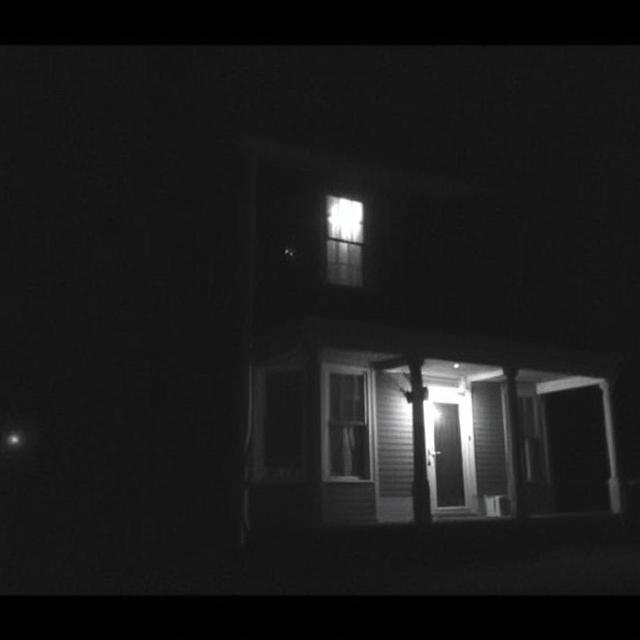It’s a knock on the door that strikes a uniquely modern terror in the heart of a parent. The person on the other side doesn’t carry a weapon or wear a mask. They are often well-dressed, professional, and carry a briefcase or a clipboard. They claim to be from Social Services, the health authority, or child protective services. They have received, they say, an anonymous and concerning report about your child. They need to come in. They need to see the child. Sometimes, they need to inspect them for bruises or marks. But when credentials are asked for, or when the parent becomes suspicious and makes a phone call, the visitor abruptly makes an excuse and leaves, vanishing as mysteriously as they appeared. A subsequent call to the actual social services department reveals the horrifying truth: they sent no one.
This is the unnerving and deeply unsettling phenomenon of the “Phantom Social Worker.” For decades, waves of these strange encounters have been reported across the world, most notably in the United Kingdom, but with similar incidents unnerving communities in the United States and elsewhere. These encounters are a chilling blend of the mundane and the menacing, playing on every parent’s fear of both “stranger danger” and the intrusive power of the state. They are a mystery that defies easy explanation, leaving behind a trail of terrified families and a haunting question: who are these impostors, and what do they really want?
The Classic Encounter: An Anatomy of Fear
While each case has its unique details, a classic pattern has emerged from the hundreds of reported incidents over the years. The event almost always begins with an unsolicited, unexpected visit, typically in the late afternoon or early evening. A man or woman, or sometimes a pair, will arrive at the door. Their appearance is calculated to inspire trust—they are described as being neat, articulate, and carrying the props of a professional.
They claim to be a social worker, a health visitor, or a child welfare agent. They state they are responding to a serious but anonymous allegation, often mentioning things like “neglect,” “unexplained crying,” or “reports of bruising.” Their primary goal is always the same: to gain access to the house and, more specifically, to the children. They may ask to speak to the children alone or, in the most terrifying scenarios, demand to physically inspect the child’s body.
The encounter often unravels when the parent’s initial compliance turns to suspicion. The phantom social worker’s credentials may be flimsy or non-existent. Their answers to specific questions might be vague or contradictory. When pressed, or when the parent attempts to call the police or the relevant agency to verify the visit, the impostor’s professional demeanor cracks. They will quickly end the visit, offering an excuse like “I must have the wrong address” or “I see the file has been resolved,” and then retreat, often to a waiting car, before disappearing completely.
The aftermath for the family is a profound sense of violation and fear. The authorities are contacted and confirm the visit was a hoax, triggering a police investigation and often a media warning. But by then, the phantom is long gone.
The British Panic of the 1990s
The phenomenon of the phantom social worker reached its zenith in the United Kingdom during the early 1990s. A confluence of social anxieties—including several high-profile, real-life child abuse cases and a growing public distrust of government authority—created a fertile ground for such a panic to take root. British tabloids were filled with sensational stories of “bogus health visitors” and “doorstep snatchers.”
Police forces across the country issued repeated warnings, advising parents not to allow anyone into their homes without first verifying their identity with their agency. The descriptions of the impostors were varied, from young women in their twenties to middle-aged men, suggesting this was not the work of a single individual or a coordinated group, but a type of social contagion. In some areas, the fear became so intense that legitimate social workers and health visitors had to be accompanied by police officers to conduct their visits, as terrified parents refused to open their doors.
Explanations and Enduring Theories
The central mystery of the phantom social worker is the motive. Who are these people, and what is their endgame? Over the years, several theories have been proposed, ranging from the sinister to the sociological.
1. Attempted Abduction: This is the most common and terrifying theory. It suggests the impostors are child abductors, using the social worker guise as a sophisticated method to scout potential victims, assess a home’s layout, and test the parents’ defenses. By posing as an authority figure, they can gain entry and access to a child with far less resistance than a traditional “stranger” might face. The visit is a reconnaissance mission; if it goes poorly, they simply retreat without raising too much alarm.
2. Misguided Vigilantes: Another theory posits that some of these phantoms may be “well-intentioned” but dangerously misguided individuals. They may have a genuine but unsubstantiated concern about a child’s welfare and take it upon themselves to investigate, either because they distrust the official system or because they are suffering from their own psychological issues.
3. Data Gathering for Criminals: A more modern interpretation suggests these visits could be a form of intelligence gathering for other criminal activities. By getting inside a home, the impostor can assess its value for a future burglary, note security systems, and identify valuables.
4. A Modern Urban Legend and Mass Hysteria: Sociologists and folklorists have noted that the phantom social worker phenomenon shares many characteristics with classic urban legends. The stories are easily spread, tap into deep-seated societal fears (the safety of children), and feature a mysterious, almost supernatural antagonist. It’s possible that a small number of real incidents were amplified by intense media coverage, creating a wave of copycat events and “false sightings,” where ordinary but confusing encounters were misinterpreted through the lens of the panic. The story becomes a self-fulfilling prophecy.
5. The Paranormal Interpretation: In the world of high strangeness, some have suggested a more outlandish theory. Given the phantom’s uncanny ability to vanish without a trace, some believe they are not human at all. This theory connects them to other “doorstep” phenomena like the “Men in Black” or the “Black-Eyed Children”—strange, quasi-human entities who appear at people’s homes with unsettling and inscrutable motives.
A Persistent Mystery
While the major wave of phantom social worker reports peaked in the 1990s, the phenomenon has never entirely disappeared. Sporadic reports continue to surface in both the UK and the US, a testament to the enduring power of this particular fear. The knock on the door remains a potent symbol of our vulnerability. It is the threshold between the safe, private world of the family and the unpredictable dangers of the outside world.
The Phantom Social Worker is a uniquely unsettling figure because they embody a contradiction. They are an authority figure who has no authority, a protector who may be a predator. They turn a symbol of state-sanctioned help into a harbinger of dread. And when they walk away from the door and vanish down the street, they leave behind a silence filled with the terrifying possibilities of what could have been.
Want to explore the shadows even deeper? For more chilling cases like this, visit SinisterArchive.com, where the legends are real.




